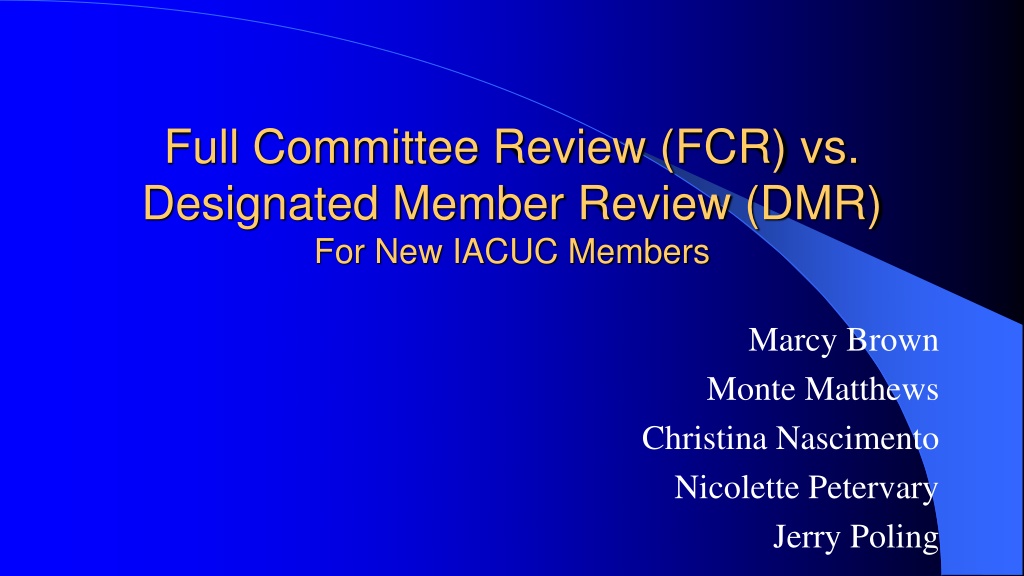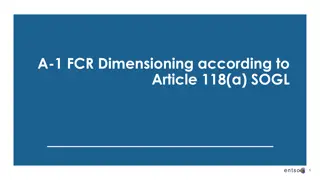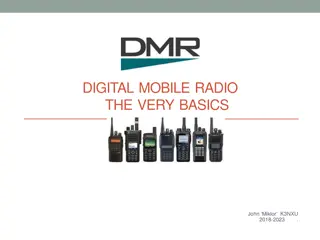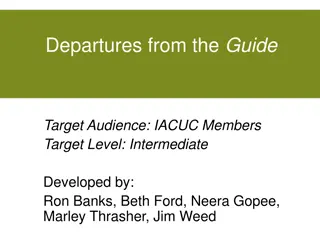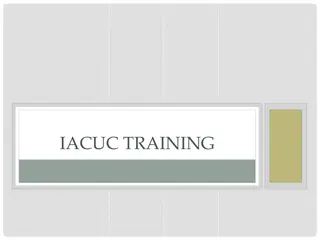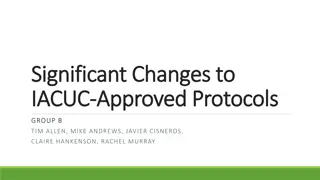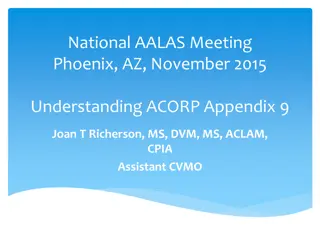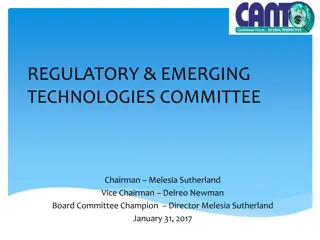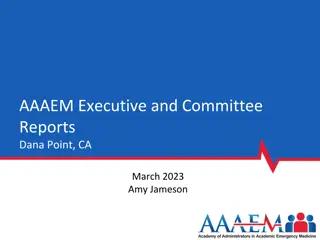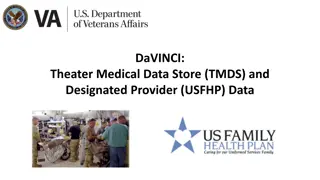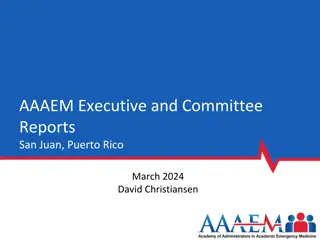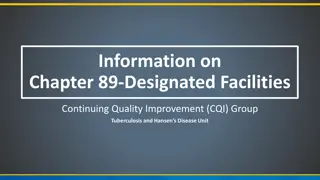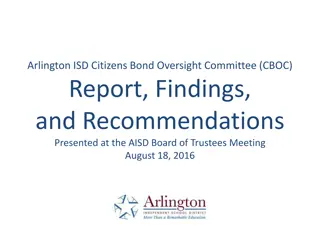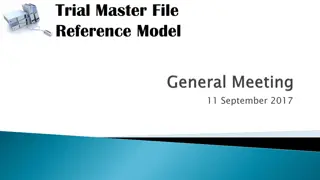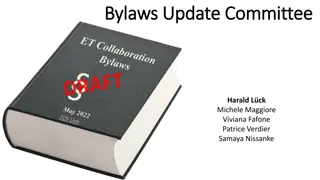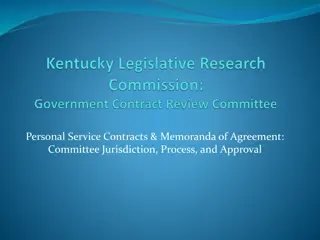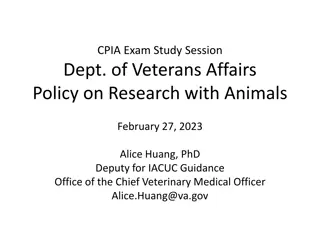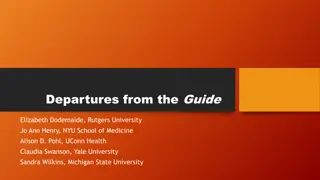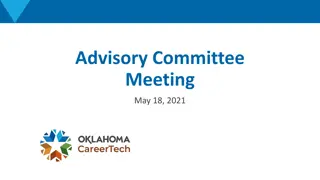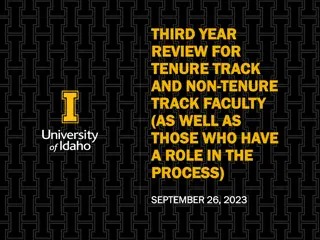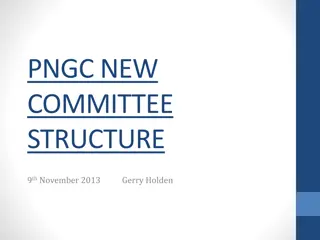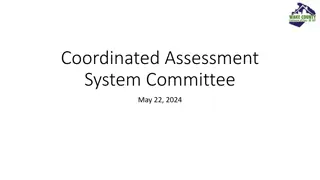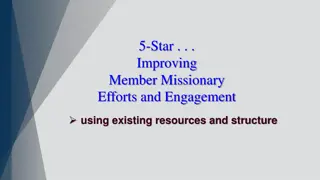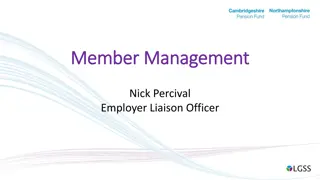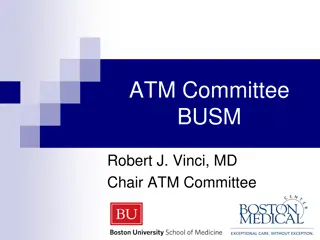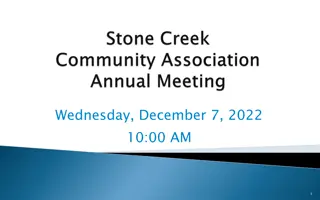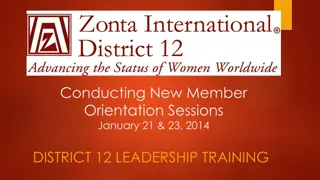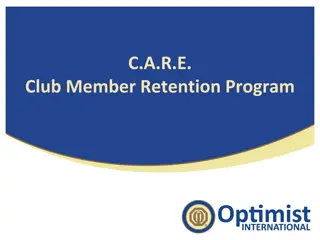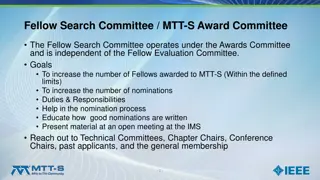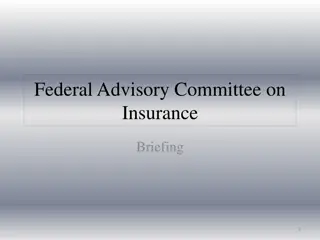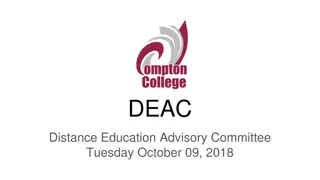Understanding Full Committee Review (FCR) vs. Designated Member Review (DMR) for New IACUC Members
Explore the differences between Full Committee Review (FCR) and Designated Member Review (DMR) for new IACUC members. Learn the acceptable methods of protocol review, federal requirements, member responsibilities, risks, and best practices for protocol approval. Dive into the two valid methods of IACUC review - FCR and DMR - to enhance your understanding of protocol approval processes.
Uploaded on Sep 22, 2024 | 0 Views
Download Presentation

Please find below an Image/Link to download the presentation.
The content on the website is provided AS IS for your information and personal use only. It may not be sold, licensed, or shared on other websites without obtaining consent from the author. Download presentation by click this link. If you encounter any issues during the download, it is possible that the publisher has removed the file from their server.
E N D
Presentation Transcript
Full Committee Review (FCR) vs. Designated Member Review (DMR) For New IACUC Members Marcy Brown Monte Matthews Christina Nascimento Nicolette Petervary Jerry Poling
GOALS Understand the acceptable methods of protocol review and approval. Explore how to reduce self-imposed "regulatory" burden by the appropriate use of DMR.
OBJECTIVES Describe and characterize the federal requirements for FCR and DMR. Examine IACUC member responsibilities for the protocol review process. Determine potential risks and burdens of each review method. Assess institutional best practices for use of FCR vs. DMR.
METHODS OF PROTOCOL REVIEW There are only two valid methods of IACUC review for approval allowed by PHS Policy, the AWARS and the Guide: Full Committee Review (FCR); or, Designated Member Review (DMR) PHS IV.C.2 & 9CFR 2.3.1(d)(2)
FCR Convened meeting of a quorum of IACUC members Face to face is preferable, but can do telecommunication (see appendices) Quorum is defined as simple majority (e.g. half plus one) Both primary and alternate can t contribute to quorum at same time Approval of a protocol requires a simple majority vote of the members present Approve, require modifications (to secure approval) or disapprove Written notification of outcome given to the PI Anyone with a conflict of interest may not count towards a quorum
DMR DMR begins only after all IACUC members have had an opportunity to request FCR. Time period for opportunity to request FCR should be defined All IACUC members should be given (at least) a list of protocols with written descriptions of the protocol made available. IACUC members do not vote during this time period. At least one qualified IACUC member serves as the designated reviewer (DR) and conducts the DMR. The DR must be designated by the IACUC Chair.
DMR There is no requirement for a written response of a no call for FCR. If no IACUC member requests FCR, then the IACUC Chair can choose one or more designated member reviewers. The DR(s) may approve the protocol, require modification of the protocol (to secure approval), or refer to FCR. DR(s) may not disapprove a protocol If DMR involves more than one reviewer, consensus must be achieved. DRs do not vote.
What do you think? A protocol is sent out to all IACUC members requesting if any member wants to call for full committee review. Your institution s policy is to allow 3 business days for any member to request FCR. After 3 business days, 10 out of the 13 members have replied no request for FCR. Can the protocol be sent to a qualified, designated member reviewer? 1. Yes 2. No 3. Maybe
What types of protocols might be best practice for FCR? Category E protocols Multiple Operative Procedures All USDA species Food and/or Fluid Regulation Behavior Studies Breeding Non-human primates Prolonged Restraint Exceptions to Standards Euthanasia/tissue harvest Major Survival Surgery Dogs/cats Minor Survival Surgery Complete Freund s Adjuvant
DMR or FCR? The Institution oversees 200 protocols (average 25 submissions per month including New, Renewals, Amendments). The Committee meets the 3rdWednesday of the month, and suggested DMRs are sent to the Committee daily. All protocols going to FCR must be submitted at least 2 weeks before the meeting. On the first day of the month, a PI submits a hamster protocol involving minor muscle biopsy procedures followed by blood draws.
DMR vs. FCR Each group will defend the review method assigned. Consider potential risks, burdens, and impacts on animal welfare. Group A, B: FCR Group D, E, F: DMR A pair with D B pair with E & F
You should now be able to. Describe and characterize the federal requirements for FCR and DMR. Examine IACUC member responsibilities for the protocol review process. Determine potential risks and burdens of each review method. Assess institutional best practices for use of FCR vs. DMR.
Summative Assessments See Handout
Summative Assessment: FCR vs. DMR What are the requirements for Full Committee Review (FCR) and approval? Check all that apply __Quorum of IACUC Members at a Convened Meeting __Approval vote of majority of IACUC members present __Attending Veterinarian must be present __Approval of majority of all IACUC members __Non-affiliated member must be present
Summative Assessment: FCR vs. DMR For the assigned designated member reviewer, what are the protocol review options? Check all that apply. __Approval __Return to PI for modification (to secure approval) __Approval with modified conditions __Referral to Full Committee Review __Disapproval
FCR vs. DMR Summative Assessments: University of PRIM&R has 12 primary members with 2 alternates. At a convened meeting, 6 primary members show up and one alternate member. Can U of P IACUC conduct Full Committee Review of protocols? Explain your answer for any of the following choices. 1. Yes 2. No 3. Maybe
FCR vs. DMR Summative Assessment: The IACUC develops a process whereby certain studies (e.g., primate, dog, survival surgery) automatically must have Full Committee Review whereas other studies (e.g. antibody production, rodent behavior) are directed to a designated member reviewer who begins the review. Is this method acceptable? Explain your answer. 1. Yes 2. No 3. Maybe
Summative Assessment: FCR vs. DMR Prior to the initiation of the designated member review process, each IACUC member must indicate if they want the protocol to be reviewed via FCR or not. ____True ____False
Guidance on Use of Telecommunications All members are given notice of the meeting. Documents normally provided to members during a physically- convened meeting are provided to all members in advance of the meeting. All members have access to the documents and the technology needed. The forum allows for real time verbal interaction equivalent to that occurring in a physically-convened meeting (i.e., members can actively and equally participate and there is simultaneous communication). NOT OD-06-052
DMR subsequent to FCR When substantive information is lacking from a protocol that is reviewed by FCR, the committee may have questions requiring a response from the PI. In such situations, the IACUC may take the following actions: If all members of the IACUC are present at the meeting, the committee may vote to require modifications to secure approval and have the revised AUP reviewed and approved by DMR, or returned for FCR at a convened meeting. If all members are not present, the IACUC may use DMR subsequent to FCR if all members have agreed in advance in writing that a quorum may decide by unanimous vote to use DMR subsequent to FCR.
Guidance on Use of Telecommunications If a vote is called for, the vote occurs during the meeting and is taken in a manner that ensures an accurate count of the vote. A mail ballot or individual telephone polling cannot substitute for a convened meeting. Opinions of absent members that are transmitted by mail, telephone, fax or e-mail may be considered by the convened IACUC members but may not be counted as votes or considered as part of the quorum. Written minutes of the meeting are maintained in accord with the PHS Policy, IV.E.1.b.
DMR subsequent to FCR If all members are not present -- All members agree in advance in writing that a quorum may decide by unanimous vote to use DMR subsequent to FCR The institution should specify its intention in its Assurance with OLAW If the IACUC lacks written standard procedures, the IACUC has the option to vote to return the protocol for FCR or employ DMR. In this case, the revised protocol must be available to all members, including those not at the meeting, for the opportunity to call for FCR
